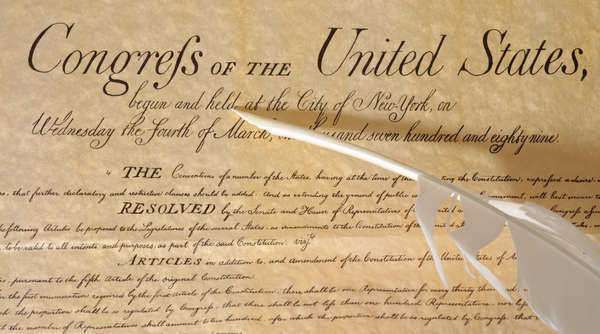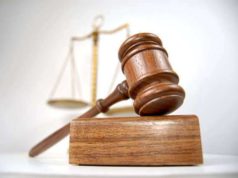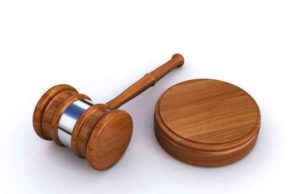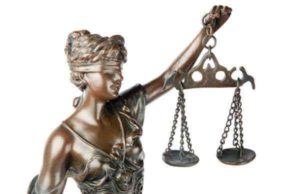
The Civil Rights Movement:
The civil rights movement, throughout the world, may refer to a series of specific events, protests, political actions, and various campaigns that were instituted to deliver equality regardless of race, religious creed, age, sexual orientation, or gender.
That being said, the term “civil rights movement” is most often synonymous with the civil rights movement that occurred in the United States during the early 1950s and throughout the mid-1960s. Throughout these decades, African-American citizens of America struggled in securing equal rights.
Civil Rights Movement in the United States:
The civil rights movement in the United States was a series of events instituted by African-Americans to outlaw racial discrimination and restore basic civil liberties (such as the right to vote) in areas primarily throughout the southern region of the country.
The civil rights movement was a civil resistance that incorporated nonviolent protests and acts of civil disobedience that perpetuated tension between government authorities and activists or leaders in the African-American community.
Racial tensions in America have long been created a societal schism. The foundation of the civil rights movement in America is enrooted in the country’s history of slavery as well as the post-reconstruction period following the Civil War.
During this time, the country was racially segregated by law; public facilities and government services (such as education) were divided into separate domains: “white” and “colored.” Characteristically, the facilities, services and general treatment of African-American citizens was far inferior and underfunded when compared to white citizens of the country.
When white Democrats regained power, they instituted various laws to further impede African-American citizens from voting. As a result of such legislation, the number of African American voters precipitously dropped; the black community was unable to elect representatives who were focused on their needs.
From 1890 to 1908, Southern states further empowered segregation through the creation of constitutions that contained provisions to disenfranchise African Americans as well as many poor white Americans. These laws further created a rift between white and black as increased economic oppression of African Americans led to the denial of opportunities and the augmentation of employment discrimination.
These laws and this general notion that African Americans were inferior to their white counterpart’s precipitated violent recourse as mass riots prompted by racial tension and the denial of civil rights created a crisis situation throughout the United States. With that in mind, many African Americans rejected violent actions and sought resistance through the development of new organizations, political redress, labor organizing as well as the institution of lawsuits.
Civil Rights Movement Timeline:
July 26th, 1949: President Harry Truman signs Executive Order 9981, which states that all members of the armed services units, regardless of race, color, religion, or national origin, shall be treated equally and given the same opportunities to find success within the military.”
May 17th 1954: A prominent portion of the civil rights timeline; The Supreme Court ruling in Brown v. Board of Education of Topeka, Kansas, that the segregation of public schools is unconstitutional. This ruling paved the way for large-scale desegregation; this landmark decision overruled the 1896 case Plessy v. Ferguson which sanctioned the “separate but equal” clause. The ruling stated that “separate educational facilities” are inherently unequal.
This victory in the civil rights movement timeline was prompted by the NAACP– (the National Association for the Advancement of Colored People) an organization formed to end discrimination through education, lobbying efforts and education—and the acting attorney, Thurgood Marshall, who later returned to the Supreme Court as the country’s first African American justice.
December 1st 1955: Months after an African American boy was brutally slain for whistling at a white woman (the men who committed the crime were acquitted by an all-white jury), NAACP member Rosa Parks refuses to give-up her seat (located at the front of the bus) to a white man.
The bus, which Park travelled on, was segregated into a “colored” and white section; in response to her arrest, Park’s community (the Montgomery black community) launches a bus boycott that lasted for more than a year. Martin Luther King Jr. a dominant civil rights leader was instrumental in leading the boycott, which ended a year later when the buses were finally desegregated.
January 1957: Civil rights leaders, Fred Shuttlesworth, Charles Steele, and Martin Luther King Jr. come together to establish the Southern Christian Leadership Conference. The SCLC becomes a critical force in organizing the civil rights movement and bases its character and principles on civil disobedience and nonviolent actions. The group placed an emphasis on non-violent actions as King stated that is essential that the civil rights movement should not sink to the level of the racists and individuals who sparked discriminatory actions.
October 1st 1962: James Meredith becomes the first African American student to enroll at the University of Mississippi.
April 16th 1963: Martin Luther King Jr. arrested and subsequently jailed following an anti-segregation protest in Birmingham, Alabama. In response, King writes his “Letter from Birmingham Jail”, stating that individuals have the moral duty to disobey unjust laws.
July 2nd 1964: President Johnson signs the Civil Rights Act of 1964—the most comprehensive civil rights legislation since Reconstruction. The Civil Rights Act of 1964 outlaws all discriminatory actions based on color, religion, national origin, and race. The legislation also provides the federal government with the ability to enforce desegregation.
Although this marks the end of this particular civil rights timeline, there have been numerous instances, achievements and organizations who have further battled for the delivery of equal rights to all individuals, regardless of ethnicity, color, religious beliefs, gender, political viewpoints, or sexual orientation.
Civil Rights Leaders:
Malcom X: An inspirational civil rights leader who worked to end segregation in the 1960s through educational speeches and peaceful demonstrations. Malcolm X commonly preached to his followers that they should fight for their rights and embrace individuality and expression.
Rosa Parks: A civil rights leader who proved to be an inspiring catalyst for human rights when she refused to give up her seat to a white passenger on a segregated bus in Montgomery, Alabama. This event, which took place on December 1, 1955, is viewed as the beginning of the civil rights movement and the impetus for the Montgomery bus Boycott—the first civil rights movement action taken by martin Luther King, Jr.
Dr. Martin Luther King Jr.: Arguably the most famous and influential civil rights leader. Dr. Martin Luther King can be found throughout the civil rights timeline; King was a president of the Southern Christian Leadership Conference and a principal member of the NAACP.
King was a crucial civil rights leader, who was inspired by Christian ideals as well as non-violent recourse. Through such actions and teachings, King sparked the civil rights movement and enabled African Americans to seek more opportunities through the establishment of equal rights and freedoms. King won the Nobel peace Prize in 1964.
Thurgood Marshall: A prominent civil rights leader who acted as an activist through litigation. Marshall was a shrewd lawyer and best known for his victory in Brown v. Board of Education of Topeka in 1964, where he argued successfully against the “separate but equal” doctrine that long justified racial segregation in public facilities and places of education.
W.E.B. DuBois: One of the older civil rights leaders, W.E.B. DuBois was a sociology scholar who acted as a prominent protest leader in the beginning half of the 20th century. Dubois played a crucial role in founding the NAACP and organized fierce protests to change the attitudes surrounding racial discrimination and the inability to receive basic civil liberties.
What You Didn’t Know About the Civil Rights Movement
The Civil Rights Movement was a transformative period in American history, marked by intense activism, resistance, and social change. While most people are familiar with the key figures and events of the movement, there are many lesser-known details that are equally fascinating. In this article, we will take a closer look at some of the lesser-known aspects of the Civil Rights Movement.
1. The Role of Women in the Movement
While Martin Luther King Jr. and other male leaders are often seen as the figureheads of the Civil Rights Movement, women played a critical role in the struggle for civil rights. Women like Fannie Lou Hamer, Ella Baker, and Diane Nash were instrumental in organizing and leading protests, sit-ins, and other actions. Despite their contributions, however, women were often sidelined and excluded from leadership positions in the movement.
2. Nonviolent Resistance Was Not Universally Accepted
While nonviolent resistance became one of the defining features of the Civil Rights Movement, it was not embraced by everyone. In fact, many activists believed in more radical forms of resistance, including violence. The Black Panthers, for example, were known for their militant tactics and confrontational approach to civil rights activism.
3. The Role of Music in the Movement
Music played a vital role in the Civil Rights Movement, serving as a source of inspiration, unity, and protest. Songs like “We Shall Overcome” and “A Change Is Gonna Come” became anthems of the movement, and artists like Sam Cooke, James Brown, and Nina Simone used their music to address issues of racism and inequality.
4. The Impact of Television on the Movement
The Civil Rights Movement coincided with the rise of television as a dominant form of mass media. This meant that events like the Montgomery Bus Boycott, the March on Washington, and the Selma to Montgomery march were broadcast to the entire country, bringing issues of civil rights and segregation into the living rooms of millions of Americans. The impact of this visual media on the movement cannot be overstated.
5. The Role of Lawyers in the Movement
While nonviolent resistance was a critical component of the Civil Rights Movement, legal action was also indispensable. Lawyers like Thurgood Marshall, Morris Dees, and Constance Baker Motley were instrumental in challenging Jim Crow laws, segregation, and other forms of discrimination through the court system. Their legal victories helped to pave the way for many of the gains made by the movement.
Conclusion
The Civil Rights Movement was a complex and multifaceted struggle for justice and equality. By exploring some of the lesser-known aspects of the movement, we can gain a deeper understanding of the challenges, triumphs, and complexities of this transformative period in American history. It is a reminder that even when the odds seem insurmountable, collective action, resistance, and activism can make a difference in the fight for social justice.



























